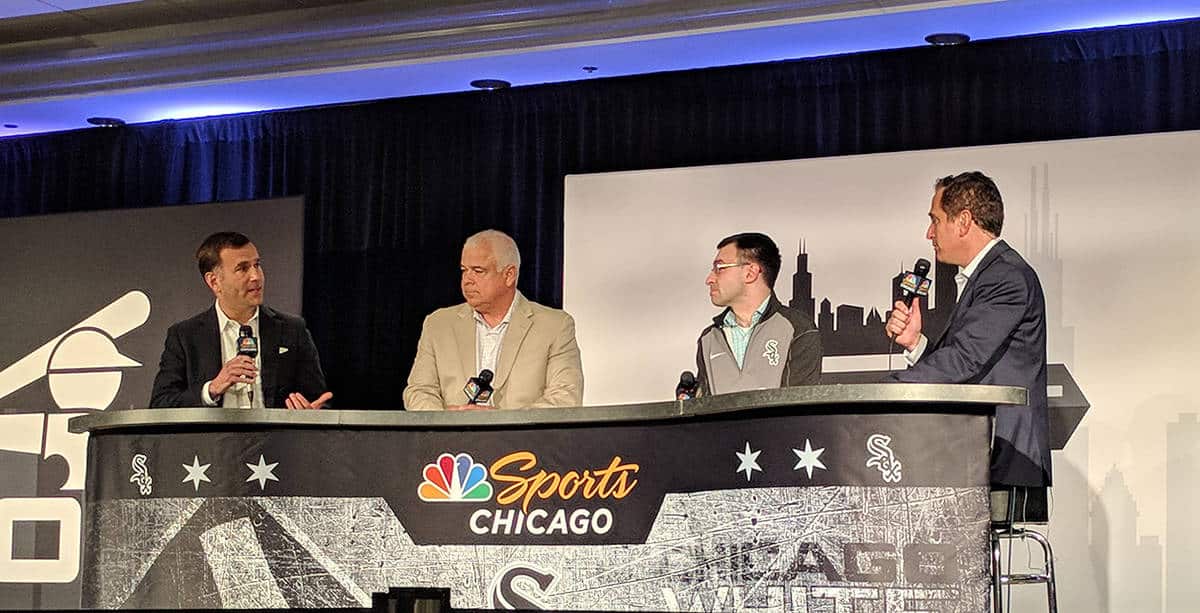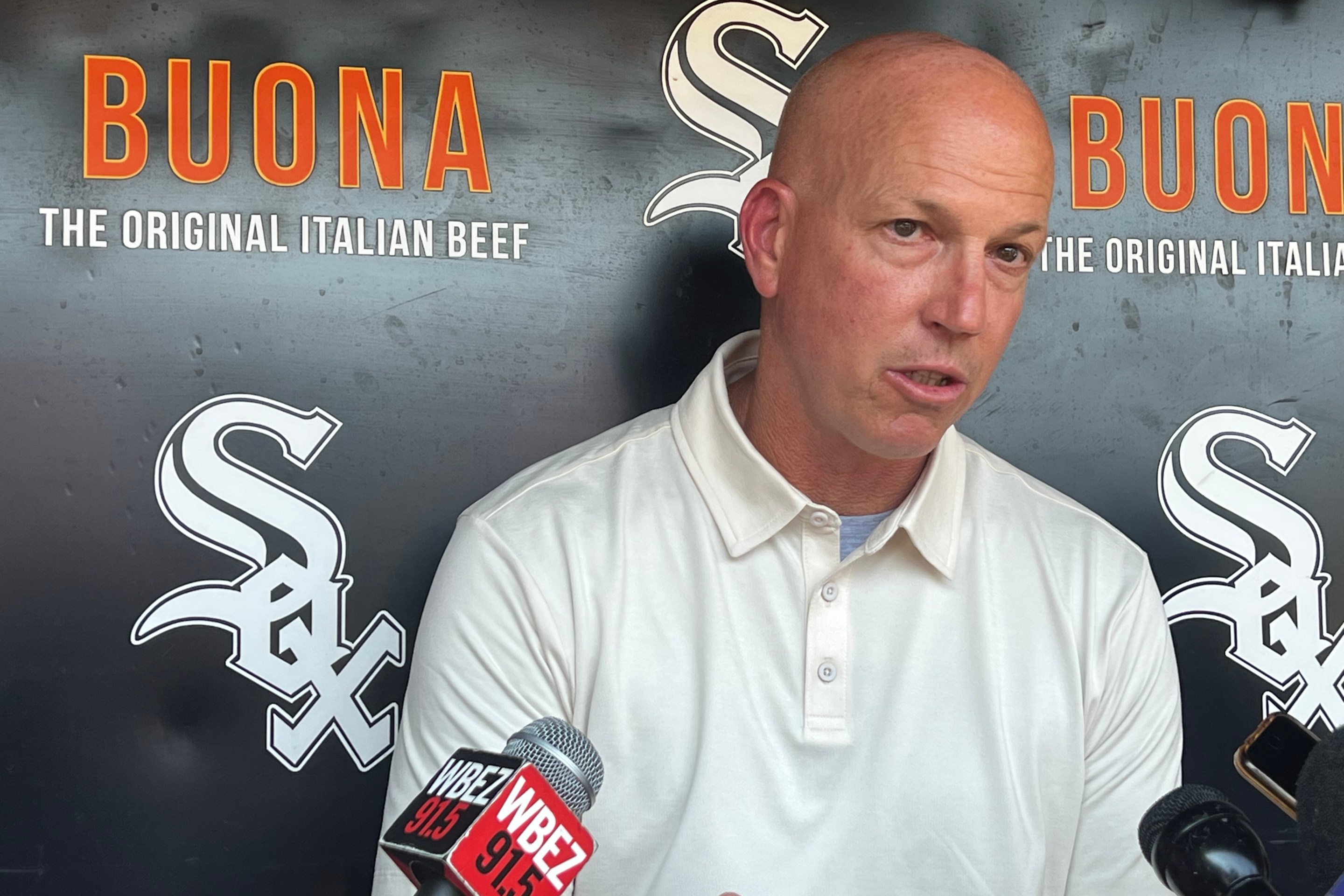If SoxFest can be used to measure familiarity of sabermetrics and analytics, the fields still have a long way to go before individual stats become household names. Fans and moderators raising the topic in questions sounded either relatively new to the topic ("How much do you use them?") or a little too close ("Can I ping your server?").
That said, catcher framing seemed to break through as being at least part of a shared language. It helps that it's an area that all three White Sox TV voices can cover in their own ways. Hawk Harrelson and Steve Stone might not bring up Baseball Prospectus' updated numbers as naturally as Jason Benetti, but receiving was a factor in their days, and they can talk about pitches caught well and poorly in their vernacular.
The same can be said for those on the stage. Rick Renteria pronounced "metrics" like "matrix" a little too strongly to pin it on the accent, but he referenced them with Welington Castillo. Having overseen Castillo's catching during his year with the Cubs, Renteria said that he thought Castillo always was fine behind the plate, but said the metrics hadn't shown it until this year. I interpreted his tone to mean Renteria thinks Castillo is finally getting a handle on his talent, not that the numbers were wrong until now.
Don Cooper, who spent his panels stressing the importance of getting ahead in the count, hit framing a little more bluntly ("We just hope they can do it.").
Hahn had said that Cooper is receptive to pitching analytics, although the requests and the information require translation to accommodate Cooper's plainspokenness. Likewise, the player development panel -- from Dan Fabian to Chris Getz -- said that coaches can wield such data to convince pitchers to decrease the usage of pitches that don't help. They may have to disguise it to personnel like you'd wrap a slice of bologna around a pill for a dog, but everybody gets what they need in the end.
This topic came to mind when reading Scott Merkin's story about Adam Engel, and how Statcast loves the way he plays center field. Engel said he wouldn't be able to explain most of the metrics, but the way he interprets the results is healthy:
Engel felt great pride in being so successful with such a shallow start, but he also thought it might be a mistake if only a couple of players were that shallow. The numbers ultimately backed up his positioning. [...]
"If the numbers are in a good spot for me playing as shallow as I'm playing, then obviously I'm just doing what they tell me to do. That was one example of the numbers really helping out from a confidence standpoint and believing in what we are doing."
Engel said his shallow play is part of the White Sox' overall philosophy of rewarding pitchers for inducing weak contact, rather than bailing them out on well-hit balls. Engel makes it work, but Jacob May's April tells me it shouldn't be applied to every center fielder. He played shallower than most during his month with the club, and it didn't seem to help anybody.
SoxFest follow-up
James Fegan paints a well-rounded picture of how Alec Hansen operates. A running theme is "things that irk him," whether it be pitch-face jokes, adult autograph hounds, social media or not having adequate velocity the third time through.
Paired with that story, one can get the idea that Hansen is relatively irascible for somebody with a placid demeanor. But this goes back to the sense I got from listening to the current and recently graduated prospects interact with each other over the weekend: It's probably better to hammer out the personality conflicts in the minors into workable shapes rather than expect everything to mesh well enough over a single 162- game sample.






